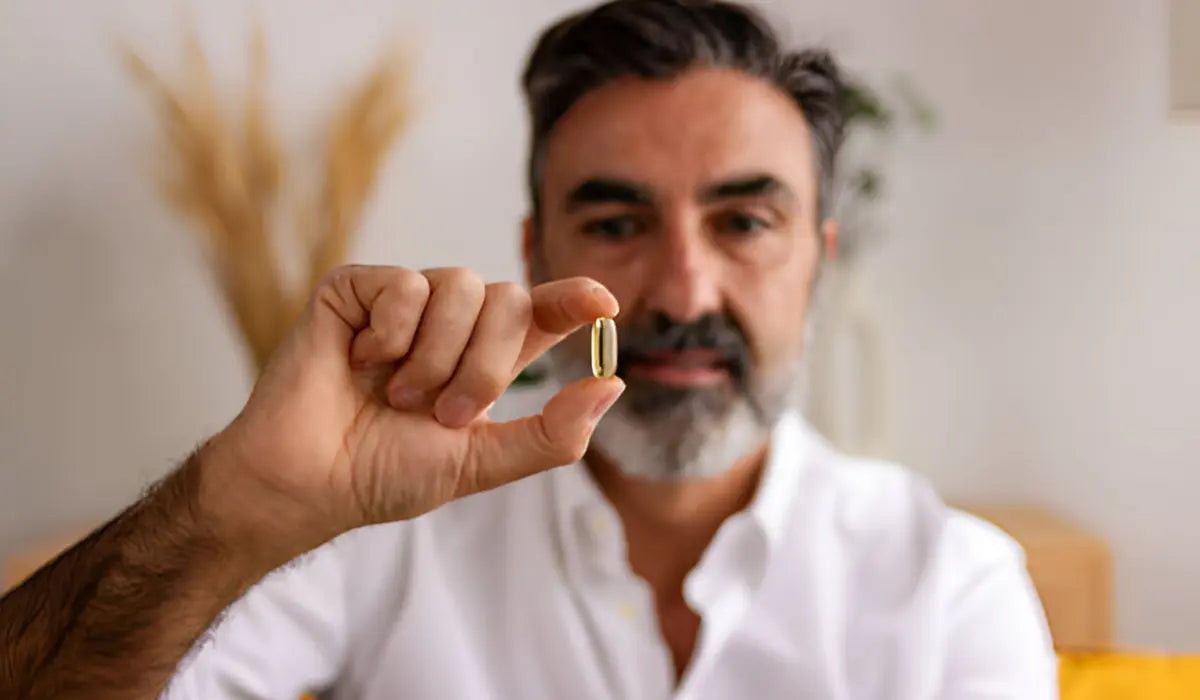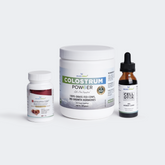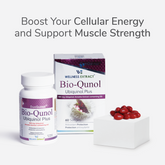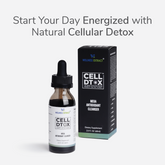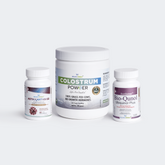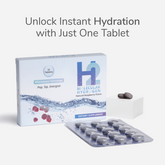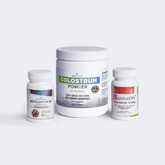Estimated Reading Time: 8 minutes
|What’s that Vitamin E lie you’ve been told for decades, and even doctors are not aware of?
Most people think they know vitamin E, but they know only half of the story! For decades, supplements shelves have been dominated by one familiar form of vitamin E, alpha-tocotrienol.
Over 90% of Vitamin E supplements contain only alpha-tocopherol, one of the 8 forms of vitamin E!
For decades, the supplement industry convinced you that tocopherol is all you need in the name of vitamin E. But here’s the twist: research shows there’s another form that’s far more powerful, yet it’s often missing from your bottle.
In this article, we’ve revealed the truth that you must know about vitamin E. In the next few minutes, we’ll look at what makes the overlooked forms so powerful. You’ll learn how these lesser-known cousins of tocopherols are quietly outperforming in key health areas.
In this blog, we’ll tell you:
-
The complete truth about vitamin E
-
What “Vitamin E” actually includes
-
Everything you need to know about the hidden vitamin E form, tocotrienols
-
Tricks to spot the lie on your supplement label
-
Why sourcing (like annatto-derived) and dosing matter
Vitamin E Has 8 Forms — But Only One Delivers Results
Most supplement brands want to hide the fact from you that vitamin E isn’t just one thing. It has 8 naturally occurring compounds:
-
4 tocopherols (alpha, beta, gamma & delta)
-
4 tocotrienols (alpha, beta, gamma & delta)
But all forms are not created equal. Among them, tocotrienols are scientifically proven to be more potent and beneficial. Thanks to its molecular structure, a tocotrienol molecule is more agile in nature.
With shorter unsaturated tails and smaller heads, they can move around more easily and stay in cell membrane for longer, especially in liver and brain. It’s their agility that makes them better antioxidants and support health better than tocopherols.
How Alpha-Tocopherol Took Over the Industry
Most supplements give you only alpha-tocopherol. If you don’t have faith, go and check the label of your vitamin E supplement!
But how did they take over vitamin E industry?
-
First form to be Identified:
Discovered in the 1920s, tocopherols became the focus of early research as it was the first vitamin E form identified. It was used to measure vitamin E activity in the body, which is why it is the most widely used form of vitamin E.
-
Label Tocopherol as Vitamin E
Products containing tocopherols are legally permitted to label themselves “Vitamin E” even if they only contain alpha-tocopherol. Current regulations like those of the FDA and health agencies, allow the term “Vitamin E” on packages as long as alpha-tocopherol is present.
-
Ease of Manufacturing
The chemical structure of tocopherols is so that it is easier to synthesize, which makes it the most common and affordable choice for supplement manufacturers.
Also Read: Complete Guide to Tocotrienols Vitamin E
Why Tocotrienols Are the Real Deal?
Like everyone, if you’ve always believed that tocopherol is the best form of vitamin E then it’s time to update that thinking. Yes! Scientific evidence supports the fact that tocotrienol is more advanced and more effective Vitamin E form your body needs.
While both tocotrienol and tocopherol belong to the Vitamin E family, research clearly shows that tocotrienols outperform tocopherols in almost every way.
How’s that so? Let’s help you understand:
-
Structural Advantage Changes Everything
Tocotrienols have a shorter, unsaturated tail in their chemical structure. This structure makes a huge difference:
-
This allows them to move more quickly and freely through cell membranes.
-
They’re absorbed faster, work more efficiently, and stay in cells longer.
-
They offer up to 40–60x more antioxidant power than alpha-tocopherol, meaning they fight oxidative stress much more effectively.
-
Tocotrienols Benefits Backed by Science, Not Hyped
Vitamin E tocotrienols have been studied for a wide range of health benefits. Various studies suggest they are good for:
-
Brain Health: Tocotrienols can cross the blood-brain barrier, helping protect brain cells from damage caused by oxidative stress and inflammation. They may inhibit harmful enzymes that kill brain cells. It is something tocopherols fail to do! Studies link them to fewer white matter lesions (tiny brain scars), healthier brain structure, and better memory and thinking.
-
Heart & Cholesterol Support: In studies, tocotrienols have shown to help reduce LDL (Low-density Lipoprotein) oxidation, support arterial function and maintain healthy cholesterol levels. With stronger antioxidant and anti-inflammatory effects, tocotrienols may help deal with age-related heart diseases.
-
Liver Health & Cellular Repair: Tocotrienols have been shown to outperform tocopherols to support liver health by protecting against fatty liver and reducing inflammation at a cellular level.
-
Anti-Aging & Antioxidant Support: Due to their special structure, tocotrienols neutralize free radicals better than tocopherols. They may help ease inflammation, support skin health, guard against UV radiation damage, support tissue healing and lower age-related risks.
The Hidden Reason Tocotrienols Are Ignored
So, many of you may be wondering, if tocotrienols are so powerful, why don’t we see them in every vitamin E supplement, right? Well, it’s not because they don’t work, it’s simple because of a mix of cost, convenience and marketing habits:
-
Tocotrienols are Pricier to Make: Pure tocotrienols (especially derived from annatto) are a bit tough to extract. They are more expensive to produce than standard tocopherols.
-
Industry Habits are Hard to Break: Supplement industries and supply chains have been built around the regular vitamin E tocopherols for decades. Turning to tocotrienols implies entire process change, something that many companies avoid.
-
Low Research Funding & Low Visibility: Big, expensive studies usually need millions of funding. Drug companies love spending money on medicines they can patent and sell for profit.
But tocotrienols, being a natural form, can’t be patented in the same way. So, only fewer big trials are done on tocotrienols, and most studies are small and short term. Even though the results are amazing, they don’t get much attention.
-
Simplified for Marketing, Not Science: For decades, supplements and marketing have focused almost entirely on alpha-tocotrienol, just one member of the family. Because of this most people think vitamin E as just single compound. Most don't even know tocotrienols exist and that they may offer better health benefits.
How to Spot the Lie on Your Supplement Label
When it comes to choosing the right vitamin E, the label can help you. But you must know what you should look for. Most vitamin E products in the market are not the right ones. Some may be synthetic while others contain tocopherols.
Watch out for these red flags on the label:
-
dl-alpha-tocopherol: This is synthetic, cheap to make, and your body can’t absorb it well.
-
d-alpha-tocopherol: Also known as RRR-alpha-tocopherol, it is a natural form, but it is only one compound of vitamin E family.
-
Mixed tocopherols: This one sounds like variety but it’s still missing the main compound, tocotrienols.
What a real vitamin E supplement label says:
-
Tocotrienols are clearly listed in the ingredients list. That’s what is the most potent form of vitamin E.
-
Source: Annatto (Bixa Orellana) is nature’s richest source of pure tocotrienols. It contains 90% delta and 10% gamma tocotrienols, which are known to provide wide ranging health benefits.
-
Tocopherol-free formulation so that tocopherols do not interfere with tocotrienol and let them work at their full strength.
-
No mega doses: The ideal dose for vitamin E tocotrienols is 100-300 mg per day. Anything that has more than this may be harmful for you.
Know that certain medical conditions, like advanced cardiovascular issues, specific liver conditions, or targeted cancer protocols, may require higher doses but only under the close guidance of a qualified healthcare professional.
-
Free from fillers: Check that label does not list emulsifiers, artificial colors, or other unnecessary additives.
Real People, Real Change
A Reddit user highlights the positive results gained from using Vitamin E tocotrienols. The user says,
“The Tocotrienols form of Vitamin E is helping immensely!
100mg a day of Tocotrienols has been incredibly helpful for me for inflammation, mental clarity, and overall energy levels. I was really surprised to experience that!”
The Choice Is Yours: Don’t Be Misled Again
Most Vitamin E supplement in the market available today are stuck in the past. They are incomplete, outdated and missing the most powerful form of vitamin E. But you deserve better, which is why you researched and came looking for this info. And you know that while investing in a supplement you’re investing in your health.
So, choose your Vitamin E supplement wisely. Besides, sharing what you’ve learned from this blog will help others also break free from the age-old myth of one-size-fits-all.
FAQs
Q1. Why do most supplements contain tocopherols and not tocotrienols?
Tocopherols are cheaper to produce and have been historically used in research. Many manufacturers haven’t adopted tocotrienols due to cost and awareness gaps.
Q2. Are tocotrienols safe for long-term use?
Current research shows tocotrienols are well tolerated. However, always consult a healthcare provider before starting long-term supplementation.
Q3. Can I take tocopherols and tocotrienols together?
It’s generally not recommended. Tocopherols may block the absorption of tocotrienols, thereby reducing their effectiveness. Always prefer delta and gamma tocotrienols derived from annatto seeds.
Q4. What’s the ideal dosage of tocotrienols?
Most clinical studies use 100–300 mg/day. Higher doses may be recommended only under medical supervision.
Q5. Where can I find tocotrienol-rich supplements?
Look for annatto-based supplements that clearly list tocotrienol content and exclude tocopherols. Check label thoroughly.
Disclaimer: These statements have not been assessed by the FDA. The information contained within this page is for educational purposes only. It is not intended to replace the advice or attention of health care professionals.
References:
1. Naomi, Ruth, et al. "An interactive review on the role of Tocotrienols in the neurodegenerative disorders." Frontiers in nutrition 8 (2021): 754086. https://www.frontiersin.org/journals/nutrition/articles/10.3389/fnut.2021.754086/full
2. Razali, Rabiatul Adawiyah, et al. "Shifting Perspectives on the Role of Tocotrienol vs. Tocopherol in Brain Health: A Scoping Review." International Journal of Molecular Sciences 26.13 (2025): 6339. https://pmc.ncbi.nlm.nih.gov/articles/PMC12249695/
3. Ramanathan, Nardev, et al. "Tocotrienol is a cardioprotective agent against ageing-associated cardiovascular disease and its associated morbidities." Nutrition & metabolism 15.1 (2018): 6. https://pmc.ncbi.nlm.nih.gov/articles/PMC5775572/
4. Pervez, Muhammad Amjad, et al. "Comparison of delta-tocotrienol and alpha-tocopherol effects on hepatic steatosis and inflammatory biomarkers in patients with non-alcoholic fatty liver disease: A randomized double-blind active-controlled trial." Complementary therapies in medicine 70 (2022): 102866. https://www.sciencedirect.com/science/article/pii/S0965229922000681
5. Malavolta, Marco, et al. "Anti-inflammatory activity of tocotrienols in age-related pathologies: a SASPected involvement of cellular senescence." Biological Procedures Online 20.1 (2018): 22. https://biologicalproceduresonline.biomedcentral.com/articles/10.1186/s12575-018-0087-4
6. Ghazali, Nur Izyani, et al. "Effects of tocotrienol on aging skin: A systematic review." Frontiers in pharmacology 13 (2022): 1006198. https://www.frontiersin.org/journals/pharmacology/articles/10.3389/fphar.2022.1006198/full






